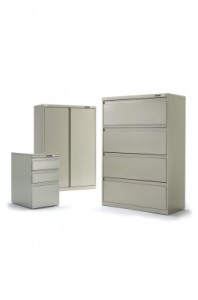Physical copies are a necessity in many offices, especially in the medical sector. An essential item of furniture in such offices is the filing cabinet. There are different types of filing cabinets and depending on your requirements, you may need some or all of them in your office.

Here is a guide on buying filing cabinets, by Nicole Groshek from National Business Furniture. Take a look.
A Guide to Filing Cabinets
Spring is generally the season that everyone associates with cleaning and organization, but the right furniture can help you stay organized all year round. Use our guide to filing cabinets before you decide what to buy to ensure that you get the best possible solution for your space.

Type
Lateral files feature wide but shallow drawers that are ideal for high capacity filing. Due to their shallow drawer extension, lateral files are great for walkways and areas that require a lot of filing in a tight space. Most Lateral files are 32″-36″ wide, making them wide enough to hold both legal- and letter-size documents, which can be arranged in either a side-by-side or front-to-back configuration. Lateral files can have as few as two and as many as seven drawers, with most two drawer units being low profile enough to fit underneath a work surface. See full post
To effectively organize your office, you need proper desks, file cabinets, bookcases and other office storage. Head to our collection of top-quality office furniture at reasonable prices at Vision Office Interiors.
